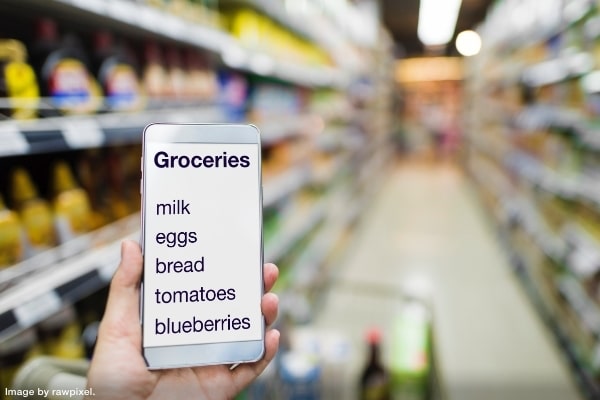
Food is more expensive than ever, so organizing your shopping and buying only what you need is essential. Overbuying leads to waste; not buying enough means you make more trips to the store and not necessarily get the best price. Here are some tips on building a grocery list to save time and money.
Plan Your Meals – or Don’t
Many people swear by meal planning. They sit down on the weekend and decide what to prepare for the following week. Then, they purchase their groceries based on their plan. Some people feel that meal plans are restrictive. Instead, they always keep their kitchen stocked with the ingredients for the meals they enjoy eating. Thus, they cook whatever they feel like eating.
Others prefer a combination of the two systems. They keep their kitchen stocked and plan specific meals for particular days. Then, they can plan their shopping to ensure they have the right fresh ingredients for their planned meal, such as seafood, avocados, or berries.
It doesn’t matter which system you use, but you should organize your grocery shopping to support it.
Make a List and Check it Twice
Lists are a powerful tool, and so is your grocery list! It doesn’t matter if you prefer paper-based or electronic-type lists; the principles are the same.
If you’re the meal-planning type, review your weekly recipes and build your grocery list from the ingredients you need. Check what you already have in your cupboards against what you need to buy. Remember to check all the ingredients in your recipes, including spices, seasonings, and condiments. (The kids like ketchup on their burgers).
Another option is to build a master list of all the food items you regularly buy, including spices, seasonings, condiments, etc. Sort them into categories. Check off the products that are running low, and shop for all the products you checked off.
Once you’ve built your list, review it before heading out to the store because other family members might have consumed food and didn’t tell you. (Some people are notorious for returning empty cereal boxes to the shelves.)
It’s a good idea to add other items to your list that you regularly purchase, too, like garbage bags, toilet paper, and other household essentials.
Paper-Based Lists
People assume I will encourage them to use a digital list because I’m a professional organizer, but it is not true. I’m a fan of paper-based planners, and if my clients want to use a paper-based grocery list, I say, “Go for it!”
There are several types of pre-made paper list pads available. They have almost all the typical foods North American households consume (and lots of space to add items). You can even get keto, vegan, and vegetarian lists. However, if your family does not eat a typical North American diet, the pre-made lists can be limiting.
Creating your own customized list using a spreadsheet on your computer has several advantages. You can:
- Add non-traditional North American foods. Garam Masala, tofu, etc.
- Add specific brands of foods. Especially if certain brands are allergen-free.
- Categorize items according to the aisles in your favourite store. Save time shopping because you won’t have to crisscross the store looking for each item.
- Print it out weekly and stick it on your fridge. The whole family can update the list.
Digital Grocery Lists
Most recipe organizer/meal-planning apps (such as Paprika) allow you to generate grocery lists. This is helpful for those who plan meals. Additionally, you can sync lists between devices, so if you plan on your computer, you can get the list on your phone, which is much easier to carry around the grocery store.
There are also numerous other options for building a grocery list. These include AnyList (iOS or Android), Grocery Gadget (iOS, web), and Our Groceries (iOS, Android). These apps allow you to sync the list between devices in real time. So, consider one of these apps if your kids won’t use the paper-based list on the fridge.
Decide Where to Shop
Most families have a favourite grocery store. But with the increasing cost of food and household goods, shopping around can be advantageous. Almost all stores have their products listed on their websites, so you can efficiently comparison-shop by opening each store’s website in a different browser window. Have your shopping list handy to see what you need and see the specials at each store. Remember to consider additional delivery or pickup fees which could negate lower prices.
It’s tempting to go to multiple stores to purchase the lowest price items from each one. But remember that your time is worth something too. Travelling even a few blocks to save $1.00 might not be worth your time (or even a bus ticket). However, if you are passing by the store on your way home (from work or the gym), it could be worthwhile to stop and shop.
For more help getting your pantry, freezer, and cupboards in order, check out our kitchen organizing tips or contact Out of Chaos for advice and assistance.
Image by rawpixel.
